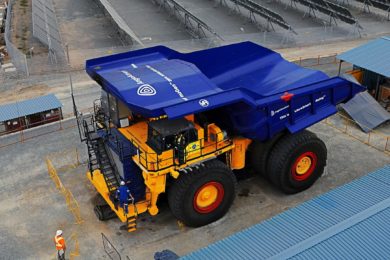Within the framework of the transformation of mining and the fight against climate change, Anglo American has brought together a series of public and private stakeholders to jointly develop a comprehensive study to analyse the economic feasibility and benefits of deploying a green hydrogen (H2V) valley or hub in the central zone of the country, namely in the Metropolitan and Valparaiso regions.
The initiative will make it possible to identify the potential applications of green hydrogen, the gaps that must be overcome to ensure its development, and provide inputs that allow the design of public policies necessary for its deployment.
“The focus of attention for the deployment of H2V has been placed on the northern and southern parts of the country, and we believe that it is key to study the possibility of developing this industry in other parts of the national territory, especially considering that the Metropolitan and Valparaiso concentrates a population of more than 8 million inhabitants,” explained Patricio Hidalgo, Executive President of Anglo American in Chile.
Marcela Bocchetto, Anglo American’s Climate Change and Biodiversity Manager, adds that “the consumption of different energy sources, such as natural gas or diesel, in the central zone is quite high; in fact, close to a third of transport emissions are concentrated in this region. It is for this reason that green hydrogen is very important to achieve the decarbonisation of Chile in accordance with the goals established by the Climate Change Law by 2050.”
Added to this are the associated economic aspects, since according to the National Green Hydrogen Strategy, adopted in 2020 and developed by McKinsey for the Ministry of Energy, Chile has the potential to produce the cheapest H2V on the planet by 2030 and develop a new industry that has a potential equivalent to 10% of GDP, a magnitude similar to mining as a whole.
The study is being led by Anglo American, through its Collaborative Regional Development (CRD) approach, and will last four months in a first phase, carried out together with the Hydrogen Technologies Unit of the Pontifical Catholic University of Chile (PUC) and international companies such as Anglo-owned First Mode, which developed the nuGen™ technology that allowed the launch of the first green hydrogen mining truck – and whose focus is the global reduction of carbon emissions, through the development of creative clean energy solutions, for heavy industries such as mining. In addition, it will have the support of an external consultant and contemplates the participation of State agencies. This hydrogen infrastructure could pave the way for nuGen™ hydrogen mining trucks at Anglo operations like Los Bronces but also at other major open pit mines in the country.
“This gathering of information is very relevant to address the particularities of the territory and the potential that the projects would have when implemented. In addition, this work will take into account the characteristics of the market and indications of the steps that should be taken,” comments Patricio Lillo, director of the Hydrogen Technologies Unit of the PUC.
Two years ago, Anglo American implemented the first zero-carbon hydrogen for vehicles in the country and for mining in general, which was built at its Las Tortolas plant, in the Colina commune. This hydrogen generator dispenses gaseous green hydrogen to a forklift, which is generated from reused water from the same mining process, demineralising it. The electrical energy necessary for its operation comes from two solar plants built inside Las Tortolas: one of them installed on the tailings deposit and which generates 86 kW; and another that generates 100 kW and uses bifacial technology. This hydrogen generation allows to reduce emissions equivalent to 24 tons of CO2 per year, by replacing the use of fossil fuels (diesel), and it was the first experience of the company and of Chile with the so-called ‘energy of the future,’ and paving the way for opportunities to advance on the path to decarbonisation.
In addition, in South Africa, Anglo American launched in May 2022 the world’s first green hydrogen powered mining truck, which was designed for full operation thanks to its hybrid propulsion system on a hydrogen battery of 2 MW, generating more power than its diesel predecessor. With a load capacity of 290 tons, the Green Hydrogen truck is part of the Zero Emission Haulage Solution (ZEHS) initiative. Today, the truck is being operated in different conditions as part of testing, seeking its maximum optimisation, with a view to later begin implementing it in other operations. The initiative is part of a plan that includes various actions, with a focus on innovation and the introduction of new technologies, aimed at achieving the goal of achieving carbon neutrality by 2040 in all the company’s operations worldwide.










